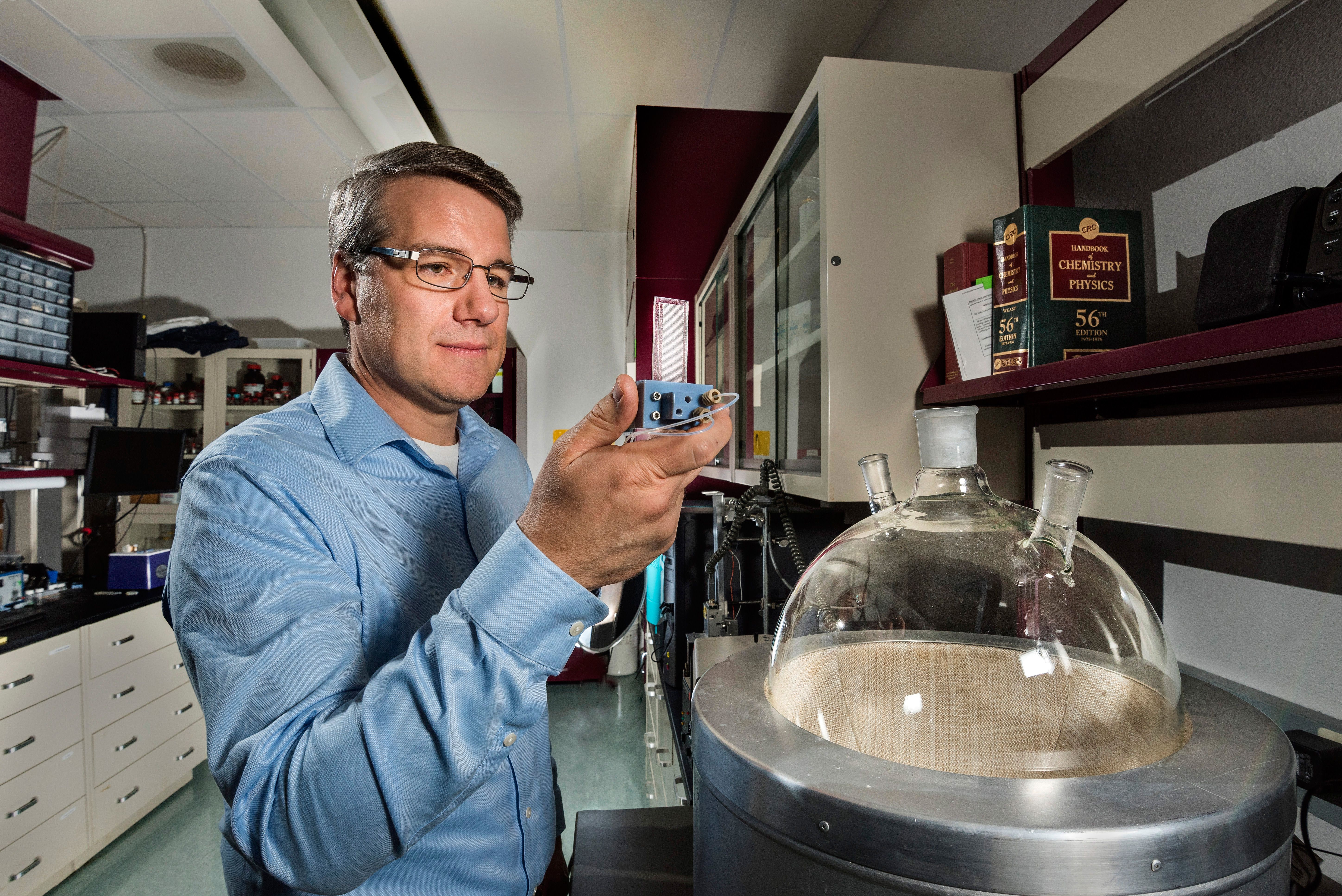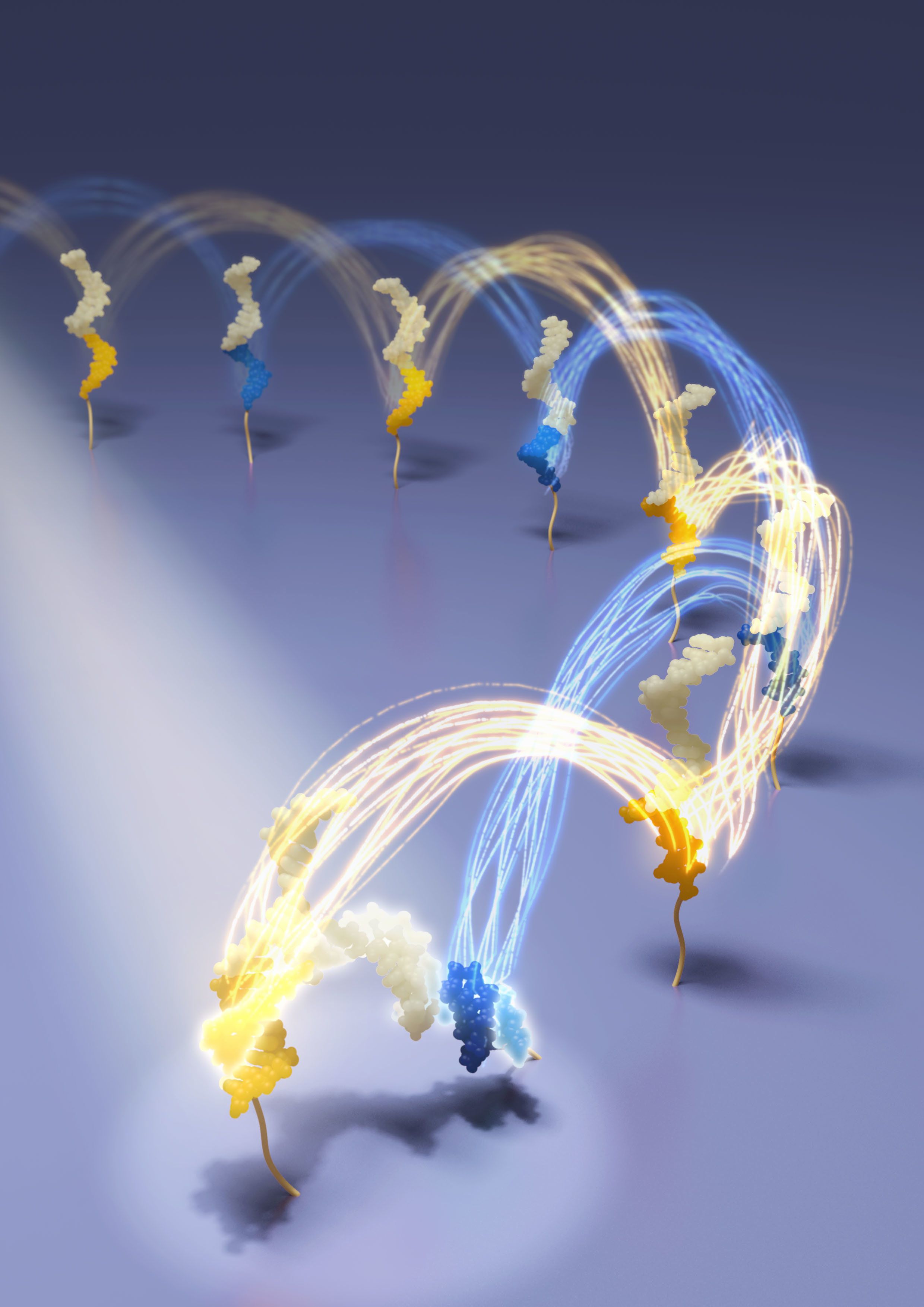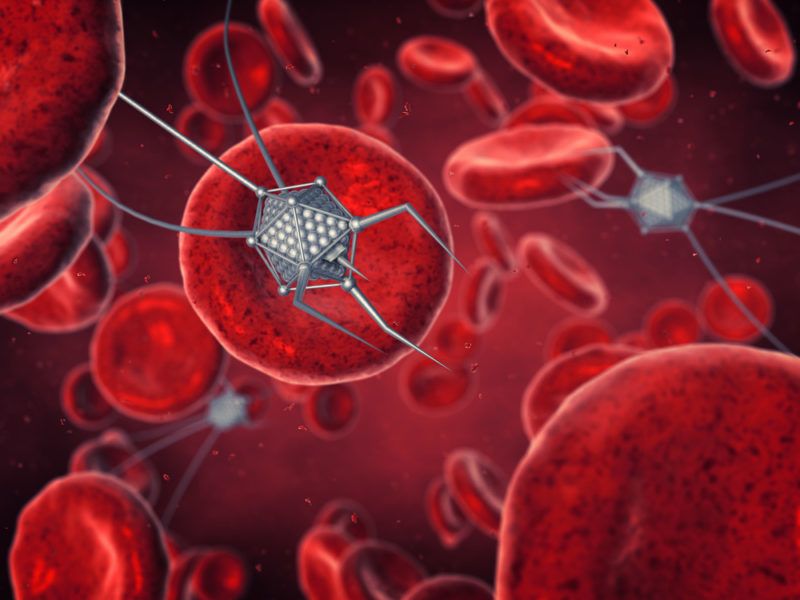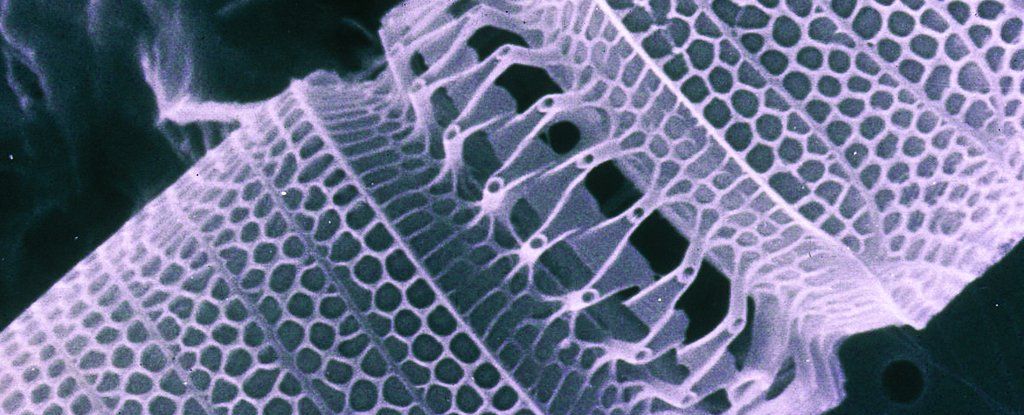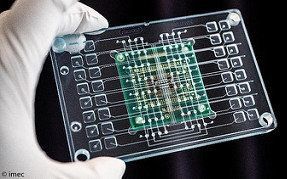Archive for the ‘nanotechnology’ category: Page 234
Jun 28, 2018
Magnetic nanoparticles put the heat on cancer
Posted by Klaus Baldauf in categories: biotech/medical, nanotechnology
Cancer is one of humanity’s biggest killers, but scientists are coming up with some creative ways to fight back. Researchers at the University at Buffalo have developed new kinds of nanoparticles that can infiltrate, heat up and kill cancer cells more effectively and efficiently than similar methods.
Using nanoparticles to fight cancer has become a growing area of research in recent years. The general concept is to get the particles into tumors, before activating them with radiation to trigger a reaction that destroys the cancer cells without harming healthy tissue. What kind of nanoparticle and radiation are used can vary, as can the type of reaction that’s triggered.
Previous work has killed tumors by activating CeF3 nanoparticles with X-rays to create toxic singlet oxygen, used infrared light to ramp up cancer’s pH balance, used laser pulses to heat up gold nanoparticles, or a combination of several of these.
Jun 23, 2018
Built for speed: DNA nanomachines take a (rapid) step forward
Posted by Ian Hale in categories: biotech/medical, mathematics, nanotechnology, robotics/AI
The smallest Imperial Walker to ever attack the rebel alliance.
When it comes to matching simplicity with staggering creative potential, DNA may hold the prize. Built from an alphabet of just four nucleic acids, DNA provides the floorplan from which all earthly life is constructed.
But DNA’s remarkable versatility doesn’t end there. Researchers have managed to coax segments of DNA into performing a host of useful tricks. DNA sequences can form logical circuits for nanoelectronic applications. They have been used to perform sophisticated mathematical computations, like finding the optimal path between multiple cities. And DNA is the basis for a new breed of tiny robots and nanomachines. Measuring thousands of times smaller than a bacterium, such devices can carry out a multitude of tasks.
Continue reading “Built for speed: DNA nanomachines take a (rapid) step forward” »
Jun 21, 2018
Using Nanoscale Robots to Fight Aging and Disease
Posted by Steve Hill in categories: biotech/medical, life extension, nanotechnology, robotics/AI
At least in the developed world, cancer, heart diseases, and neurodegenerative diseases are among the greatest causes of mortality. One emerging and very promising way to prevent or cure these diseases is through bio-nanotechnology.
Nanotechnology is the design, synthesis and application of materials or devices that are on the nanometer scale (one billionth of a meter). Due to the small scale of these devices, they can have many beneficial applications, both in industry and medicine. The use of nanodevices in medicine is called nanomedicine. Here, we will look at some applications of nanomedicine in curing or preventing the diseases that are most likely to kill us.
Jun 12, 2018
Space Nanodiamonds Found to Be Source of Some Cosmic Microwave Radiation
Posted by Genevieve Klien in categories: nanotechnology, space
Jun 9, 2018
AI-based method could speed development of specialized nanoparticles
Posted by Alexander Rodionov in categories: biotech/medical, nanotechnology, robotics/AI
A new technique developed by MIT physicists could someday provide a way to custom-design multilayered nanoparticles with desired properties, potentially for use in displays, cloaking systems, or biomedical devices. It may also help physicists tackle a variety of thorny research problems, in ways that could in some cases be orders of magnitude faster than existing methods.
The innovation uses computational neural networks, a form of artificial intelligence, to “learn” how a nanoparticle’s structure affects its behavior, in this case the way it scatters different colors of light, based on thousands of training examples. Then, having learned the relationship, the program can essentially be run backward to design a particle with a desired set of light-scattering properties—a process called inverse design.
The findings are being reported in the journal Science Advances, in a paper by MIT senior John Peurifoy, research affiliate Yichen Shen, graduate student Li Jing, professor of physics Marin Soljacic, and five others.
Continue reading “AI-based method could speed development of specialized nanoparticles” »
Jun 4, 2018
Stronger, deeper PH-SoKor ties sought
Posted by Michael Lance in categories: biotech/medical, nanotechnology, policy, robotics/AI, transportation
“This, of course, will deepen scientific and technological cooperation at the experts’ level in many areas, including but not limited to, advanced material sources. We are talking here of biotechnology, nanotechnology, data analysis, artificial intelligence, space technology, innovation policy,” Hernandez said.
By Genalyn Kabiling and Argyll Cyrus Geducos
Seoul, South Korea — The country’s vibrant relations with South Korea are expected to be strengthened with the planned cooperation accords on transportation safety, technological development, port expansion, and revitalized trade during President Duterte’s official visit.
May 30, 2018
Elon Musk Called Nanotechnology BS
Posted by Klaus Baldauf in categories: Elon Musk, engineering, nanotechnology, solar power, sustainability
In case you missed it, Elon Musk called BS on the field of nanotechnology last week. The ensuing Twitter spat was admittedly rather small on the grand scale of things.
But it did throw up an important question: just what is nanotech, and where does the BS end and the science begin?
I have a sneaky suspicion that Musk was trolling with his initial nano-comment. After all, much of the tech in his cars, solar cells and rockets relies on nanoscale science and engineering.
May 25, 2018
Nanoparticles carry drug duo into the brain to fight cancer
Posted by Genevieve Klien in categories: biotech/medical, nanotechnology, neuroscience
Glioblastoma is one of the most deadly forms of cancer. Affecting the brain, those unlucky enough to receive a diagnosis don’t have many treatment options – and usually a median life expectancy of just over a year. Now, researchers at MIT have developed nanoparticles that could provide hope, crossing the blood-brain barrier and delivering two types of drugs to fight tumors.
The MIT nanoparticles are liposomes, fatty droplets that can carry one drug on the inside and another in the outer layer. On the inside, the particles were loaded with a common chemotherapy drug called temozolomide, while the outer shell contained a more experimental substance known as JQ-1.
May 23, 2018
Novel organ-on-chip platform for drug screening
Posted by Bill Kemp in categories: biotech/medical, computing, nanotechnology
Imec, the world-leading research and innovation hub in nano-electronics and digital technologies, presents this week at its technology forum ITF 2018 (Antwerp, May 23–24), a novel organ-on-chip platform for pharmacological studies with unprecedented signal quality. It fuses imec’s high-density multi-electrode array (MEA)-chip with a microfluidic well plate, developed in collaboration with Micronit Microtechnologies, in which cells can be cultured, providing an environment that mimics human physiology. Capable of performing multiple tests in parallel, the new device aims to be a game-changer for the pharmaceutical industry, offering high quality data in the drug development process.
Every year a handful of new drugs make it to the market, but in their wake tens of thousands of candidate drugs didn’t make the cut. Nevertheless, this journey will have taken a decade and costs billions. The fact that drug development is so time-consuming and costly, is because of the insufficiency of the existing methodologies for drug screening assays. These current assays are based on poor cell models that limit the quality of the resulting data, and result in inadequate biological relevance. Additionally, there is a lack of spatial resolution of the assays, resulting in the inability to screen single cells in a cell culture. Imec’s novel organ-on-chip platform aims to address these shortcomings and challenges.
Imec’s solution packs 16,384 electrodes, distributed over 16 wells, and offers multiparametric analysis. Each of the 1,024 electrodes in a well can detect intracellular action potentials, aside from the traditional extracellular signals. Further, imec’s chip is patterned with microstructures to allow for a structured cell growth mimicking a specific organ.
Continue reading “Novel organ-on-chip platform for drug screening” »
